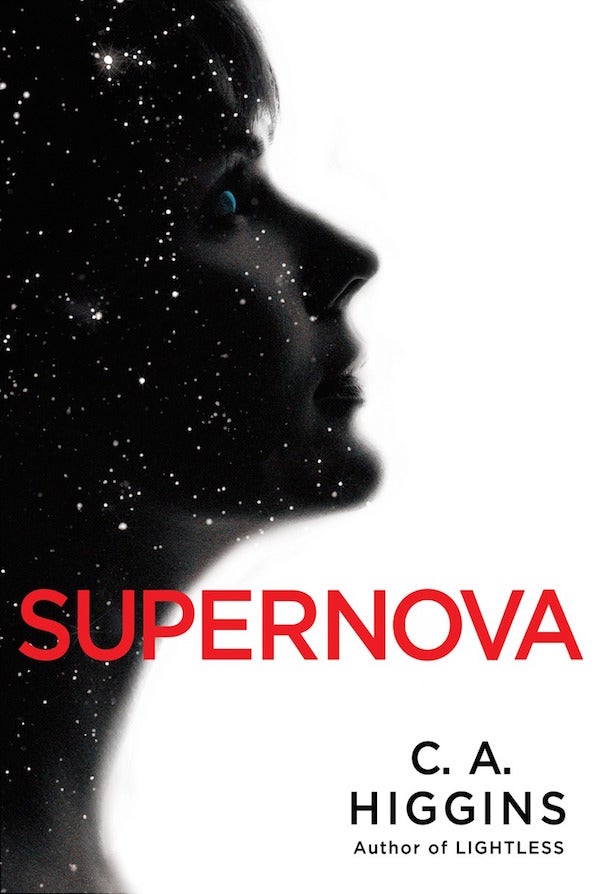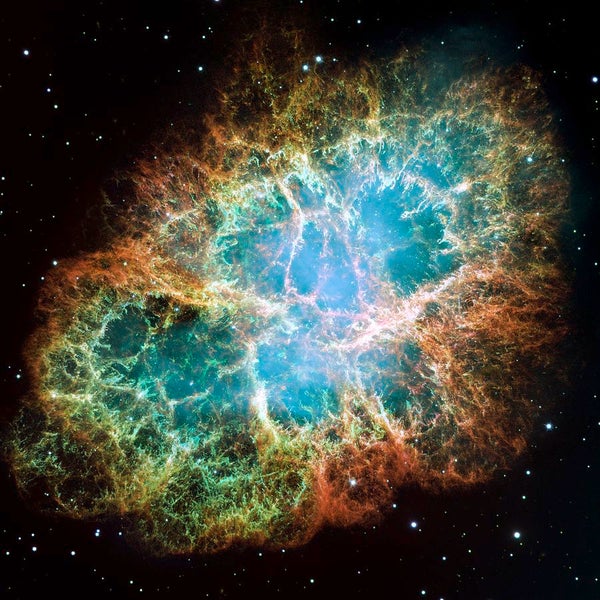This article was published in Scientific American’s former blog network and reflects the views of the author, not necessarily those of Scientific American
The professor had drawn a square with polka dots on the whiteboard.
By this point in the semester, I was past questioning diagram choices. I obligingly copied the cartoon of a slice of raisin bread into my notebook and began to surround it with equations.
Lectures on thermodynamics were never my favorite. I found statistical mechanics unsatisfying—not as graceful or certain as Newtonian mechanics or relativity; not as surreal as quantum. It was interesting in the abstract to know what would happen to a glass of water if I subjected it to the same heat and pressure that was present at the center of the sun—assuming I could get it there, keep it contained, and then actually observe it without one or the other of us being obliterated. But for the most part I felt like I was looking at static-buzzing clouds of particles doing things I could barely force equations to predict for reasons I could never quite understand.
On supporting science journalism
If you're enjoying this article, consider supporting our award-winning journalism by subscribing. By purchasing a subscription you are helping to ensure the future of impactful stories about the discoveries and ideas shaping our world today.
In fact, up to that point the only thing I really liked about thermo were the Laws of Thermodynamics.
The Laws of Thermodynamics have a story, one with a satisfying dramatic escalation. I heard the clap of thunder when the professor first introduced us to them, several lectures before:
The Zeroeth Law If two systems are in thermal equilibrium with a third system, they are also in thermal equilibrium with each other. That’s what temperature is, the professor told us. (A decent start to a story, defining for us the rules of the world.)
The First Law The internal energy of an isolated system is constant. Energy is conserved—what you take, you must give. (The next stage of the plot, implying conflict.)
The Second Law The entropy of an isolated system may never decrease. Chaos increases—and there is no reversing what has been done. (Here’s our point of no return.)
The Third Law The entropy of a system approaches a constant value as the temperature of the system approaches zero. This one describes the end of the universe, the professor told us: a heat death. Maximum disorder, and nothing can be done about it. (This is The End: the inevitable sum of all the changes that came before.)
All right, I’ll admit that the strictly scientific descriptions of the laws provided to me by the professor that day got interpreted somewhat more theatrically in their journey from the whiteboard to the pages of my notebook. But I never forgot them.
Then, a few lectures later, the professor drew a mystifying diagram of a hole-punched quilt square on the whiteboard.
This spotted rectangle, he explained to us, represented in this moment a bunch of ideal gas particles in an impenetrable box isolated from the world around it. From this box, and from what we knew of the nature of these individual particles, we would be building to an equation I remembered from high school chemistry: the ideal gas law, PV=nRT
But somehow, by walking through the process of describing how each of those particles interacted with each other, contributing to the state of the whole, those particles developed a sort of personality. In the cold, they would huddle together in their box, hunkered down as small and tight as they could comfortably get. Heat it up, and they would move apart. In a big box, they would spread out as far from each other as they could, maximizing their personal space—and as the box got smaller, they would start to beat their fists against the walls.
What had started as a leopard-print origami square drawn haphazardly in my notebook became a room full of people interacting with one another. And of course, isolated as they were, the Laws of Thermodynamics told me how their interactions would evolve: the disorder would increase, and increase, and increase.
A month later I wrote the short story that contained the backbone of plot that would become LIGHTLESS. A few months after that, I took that backbone—shaped by the Laws of Thermodynamics that I remembered better for their drama than for their physical applications—and began to build my isolated room and populate it with my particle-characters.
A different professor told me once that physics is all about developing intuition. If you don’t develop intuition for a scenario, you’ll be stuck systematically going through every possible solution like a computer, but without a computer’s speed. Writing is the same: if you have no intuition for how a plot or a character should develop, you’ll be stuck rotating through stilted tropes. In the end, the intuition of writing was more appealing to me than physics. But when I put a plot together, I still treat it like a physics problem: gather my characters like variables and constants, my plots and subplots like equations, and then put them all together in search of—I hope—an elegant solution.
C.A. Higgins second novel, Supernova, has just been published by Del Rey Books

Credit: Del Rey Books
